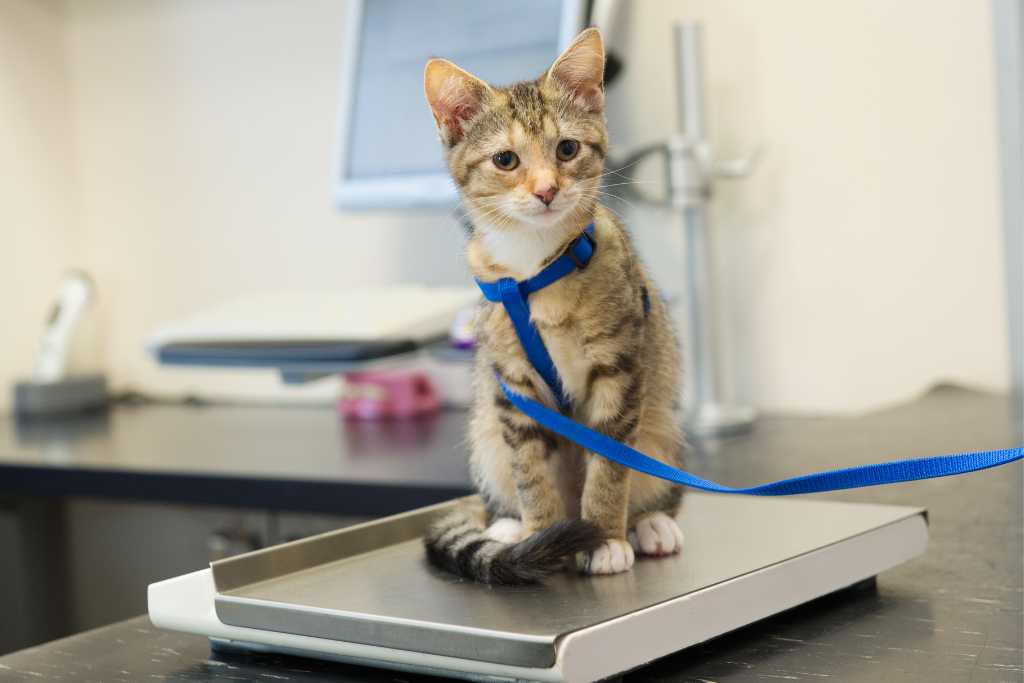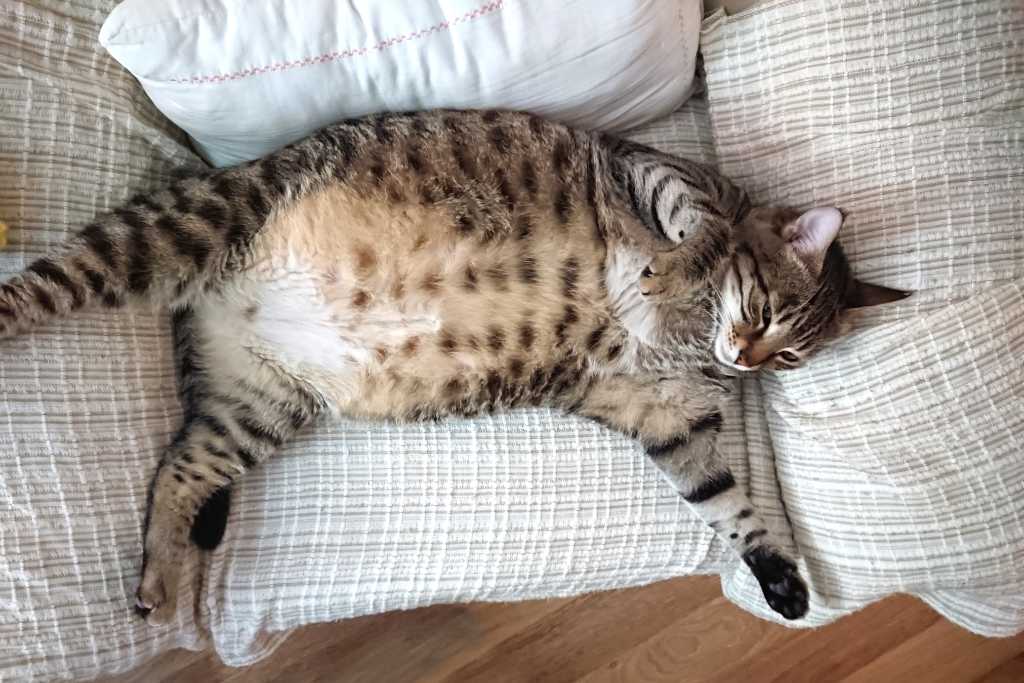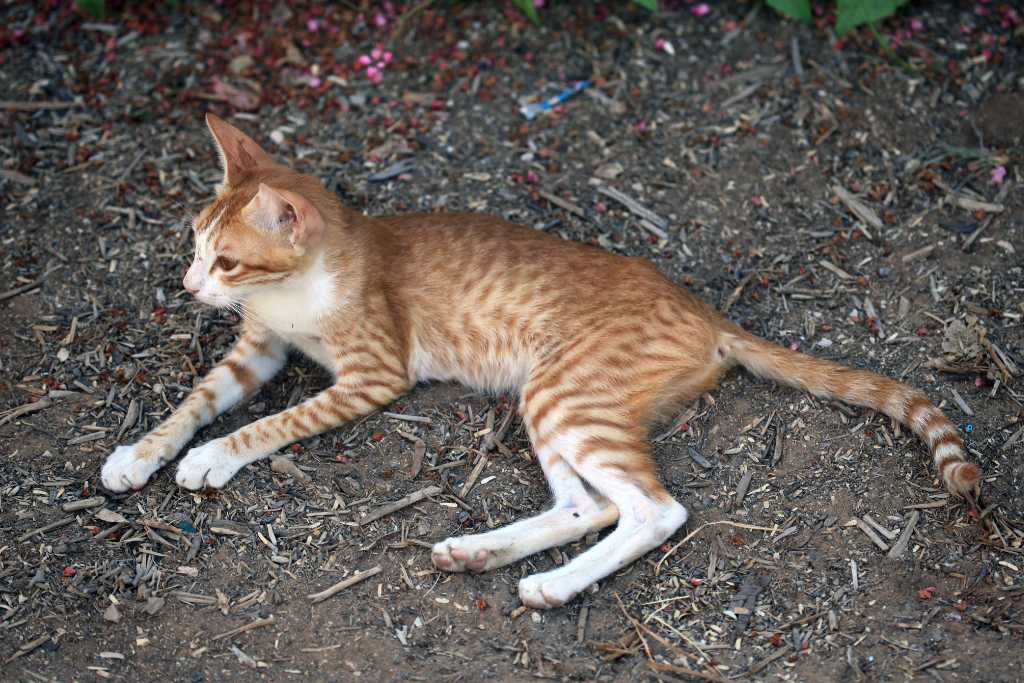$59.00
AWAY FROM FREE SHIPPINGNICE. SHIPPING IS ON US!
$120.00
AWAY FROM FREE GIFTCHOOSE A FREE GIFT DURING CHECKOUT!
YOUR CART IS EMPTY. SHOP NOW.
Just like us, cats can also struggle with weight issues that impact their health and well-being. Understanding whether your cat is overweight, underweight, or at an ideal weight is crucial for ensuring their overall quality of life. In this article, we'll explore the importance of maintaining the right weight for your feline friend, discuss the ideal cat weight, and provide insights into using body weight charts effectively.

Maintaining an ideal weight for cats is crucial for their overall health and well-being. Carrying excess weight or being underweight can lead to a range of health issues that can significantly impact a cat's quality of life. Here's why it's important for cats to be at an ideal weight.
Mobility and agility
Cats are natural hunters and explorers. Being at an ideal weight allows them to move with agility and grace, enabling them to jump, climb, and navigate their environment effectively. Overweight cats may struggle with these activities, reducing physical activity and muscle tone. Being at an ideal weight enhances a cat's overall quality of life. They can enjoy their favourite activities and experience less discomfort.
Joint health
Excess weight puts additional strain on a cat's joints, increasing the risk of conditions like joint inflammation and arthritis. Maintaining a healthy weight reduces the stress on joints and helps prevent painful joint issues that can limit a cat's mobility and comfort.
Heart health
Overweight cats are at a higher risk of developing cardiovascular problems, including heart disease and hypertension.
Cat diabetes
Obesity is a significant risk factor for feline diabetes. Overweight cats have a higher likelihood of developing insulin resistance, which can lead to diabetes. Managing weight can help reduce this risk.
Respiratory health
Carrying excess weight can make breathing more difficult for cats, especially those with flat faces (brachycephalic breeds). Obesity can exacerbate respiratory issues and reduce overall lung function.
Reproductive health
Both overweight and underweight cats can face reproductive challenges. Obesity can lead to complications during pregnancy and birth, while underweight cats might struggle with fertility issues.
Mental and emotional well-being
Cats that are at a healthy weight are more likely to engage in play, exploration, and social interactions. These activities are essential for their mental and emotional well-being.

The ideal weight for a cat can vary depending on factors such as breed and age. However, there are general guidelines that can help you determine if your cat is at a healthy weight. An adult domestic cat usually weighs between 4 to 5 kilograms. Larger breeds can weigh up to 9 kilograms, while smaller breeds might weigh as little as 2.3 kilograms. To get a more accurate assessment of your cat's ideal weight, it's important to consider their body composition, which includes muscle mass and body fat percentage. A well-muscled cat might weigh more than a cat with a higher percentage of body fat, yet still be healthier.
Body weight charts are valuable tools that can help you determine whether your cat falls within a healthy weight range. These charts typically categorize cats as underweight, ideal weight, overweight, or obese based on their body condition score (BCS). The BCS takes into account factors such as the cat's overall appearance, palpable fat, and the visibility of ribs.
Most BCS scales range from 1 to 9, with 1 being extremely underweight and 9 being extremely obese. An ideal BCS for a cat is usually around 4 to 5. Here's a brief overview of what different BCS values may indicate and the link to the WSAVA Cat Body Condition Score chart.

If you determine that your cat is overweight or underweight, it's important to take appropriate action to help them achieve and maintain a healthy weight.
For overweight cats
For underweight cats

Understanding whether your cat is overweight, underweight, or at an ideal weight is crucial for their overall well-being. A healthy weight is vital for their physical health, emotional well-being, and longevity. Using body weight charts and body condition scoring can help you make informed decisions about their diet and lifestyle. Regular monitoring of their weight, along with proper nutrition and exercise, can help prevent weight-related health issues and ensure that your feline companion enjoys a vibrant, happy and healthy life by your side.

Comments will be approved before showing up.



